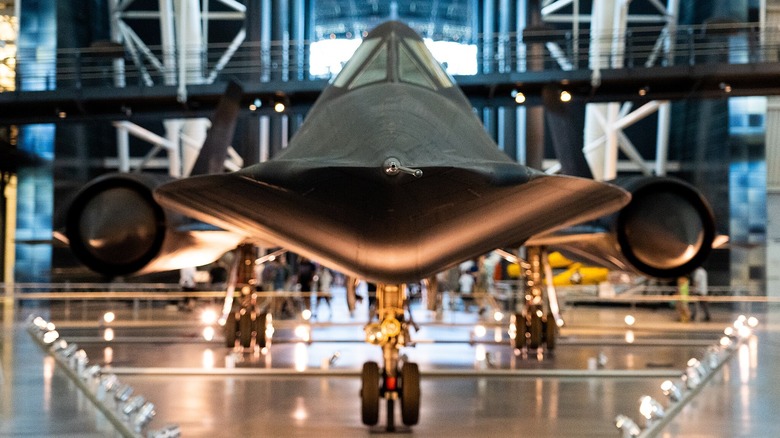Why Did The US Air Force Retire The SR-71 Blackbird?
The SR-71 Blackbird was the world's fastest jet. Capable of of flying as high as 85,000 feet at Mach 3.3 (2,193.2 mph), the Blackbird was used for intelligence, surveillance, and reconnaissance. It was officially retired in 1990, made a comeback in 1995, and then was retired again in 1997 by the United States Air Force.
The primary reason officials cited for retiring the aircraft was the cost it took to run them. In the late 1980s, leaders like then-Air Force Chief of Staff Gen. Larry Welch were already telling Congress that operating the aircraft drained too many resources from other programs. Secretary Edward Aldridge estimated that the annual $200–$300 million spent on the fleet of supersonic aircraft could instead operate two tactical fighter wings, with the Blackbird's special JP-7 fuel alone costing around $18,000 per hour.
At the same time, officials pointed out that reconnaissance satellites and new unmanned systems could do the work the Blackbird had been responsible for. Some even thought it was becoming vulnerable to advanced Soviet missiles. The story of it being expensive and redundant seemed plausible, especially during changes to budgets that occurred after the Cold War. Some have suggested, however, that there was more to the story.
The bid to retire the SR-71 the first time didn't last long
Many were not pleased that the SR-71 was being retired and argued that it still had a role to play for surveillance and reconnaissance missions. Ben Rich, the former director of the company that manufactured the aircraft, Lockheed's Skunk Works, said the company essentially lost a budgetary turf war inside the Air Force, which was prioritizing the B-2 stealth bomber manufactured by Northrop Grumman during the post–Cold War defense cuts.
Government officials said that satellites and new drones made the SR-71 unnecessary, even though intelligence officials countered that no orbiting platform could contend with the Blackbird's rapid response to world events. The absence of the SR-71 quickly proved why it was needed in the first place, however. Nothing replaced it in the years followings its retirement, and an analysis by Congress showed that it could have been a valuable asset during the Persian Gulf War. As a result, Congress approved $100 million in funding to bring the Blackbird back in 1995. Other concerns about the S-300 advanced missiles from the Soviets held some weight but were a bit exaggerated. After all, not a single attempt to take down an SR-71 was successful.
The SR-71 didn't see much flight time after it was revived
The lack of intelligence during the Gulf War may have prompted Congress to authorize the Blackbird's reactivation, but it was Lockheed's belief that it could have one ready to go quickly that helped its case even more. However, none of it really mattered because that decision kicked off a messy dispute about whether the funds Congress had appropriated for the SR-71 program could be legally spent by the Air Force. A handwritten note from then-Chief of Staff Gen. Ronald Fogleman called the revival a "one-year congressionally directed action that should be terminated ASAP," as reported by Air & Space Forces Magazine.
Two requests from the Intelligence Community to use the aircraft in surveillance missions were not approved, according to Air & Space Forces Magazine. In 1997, then-Deputy Chief of Staff for Air and Space Operations Gen. John P. Jumper also objected to a request by the United States Southern Command to use a SR-71, arguing the U.S. military's U-2 spy plane could handle the mission instead. Finally, in October 1997, President Bill Clinton used a line-item veto to cut SR-71 funding, essentially ending the comeback. Since the retirement of the SR-71 Blackbird in 1998, no single platform to date has been fully capable of filling its shoes.


